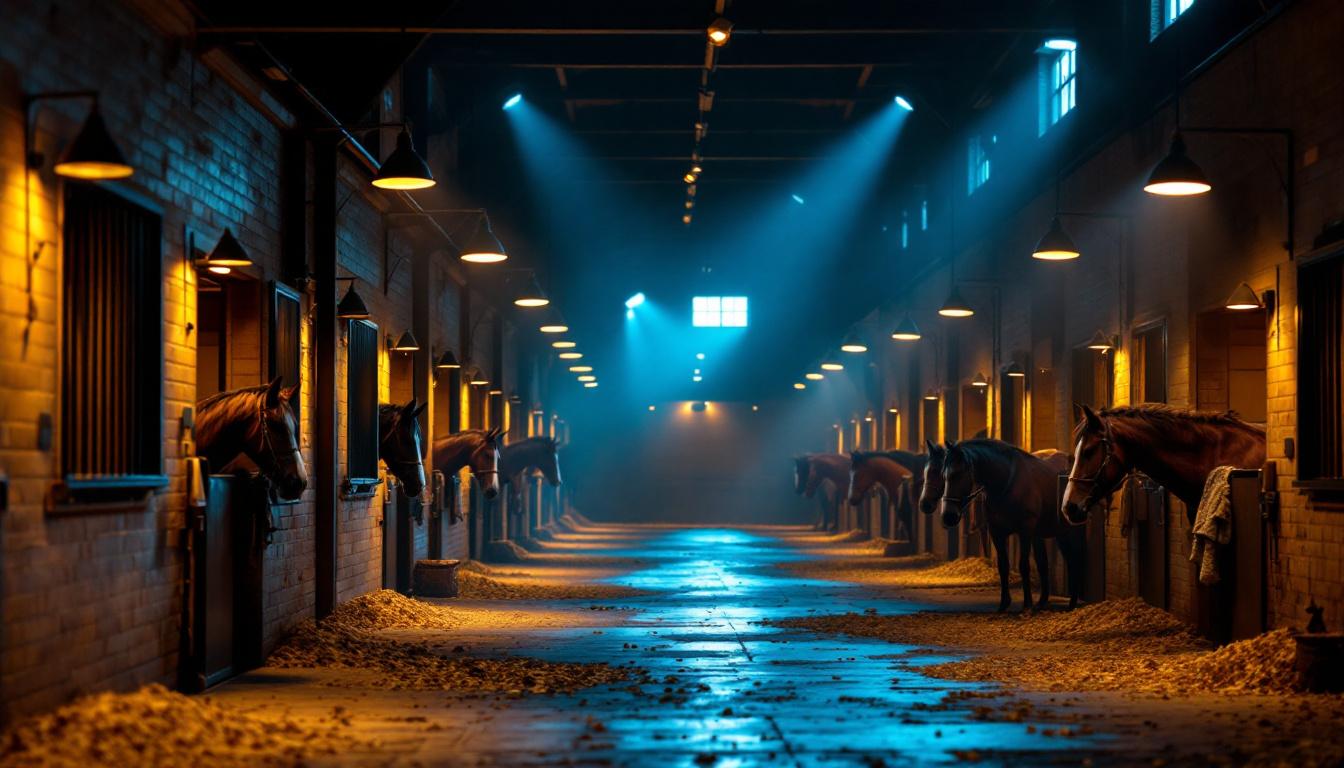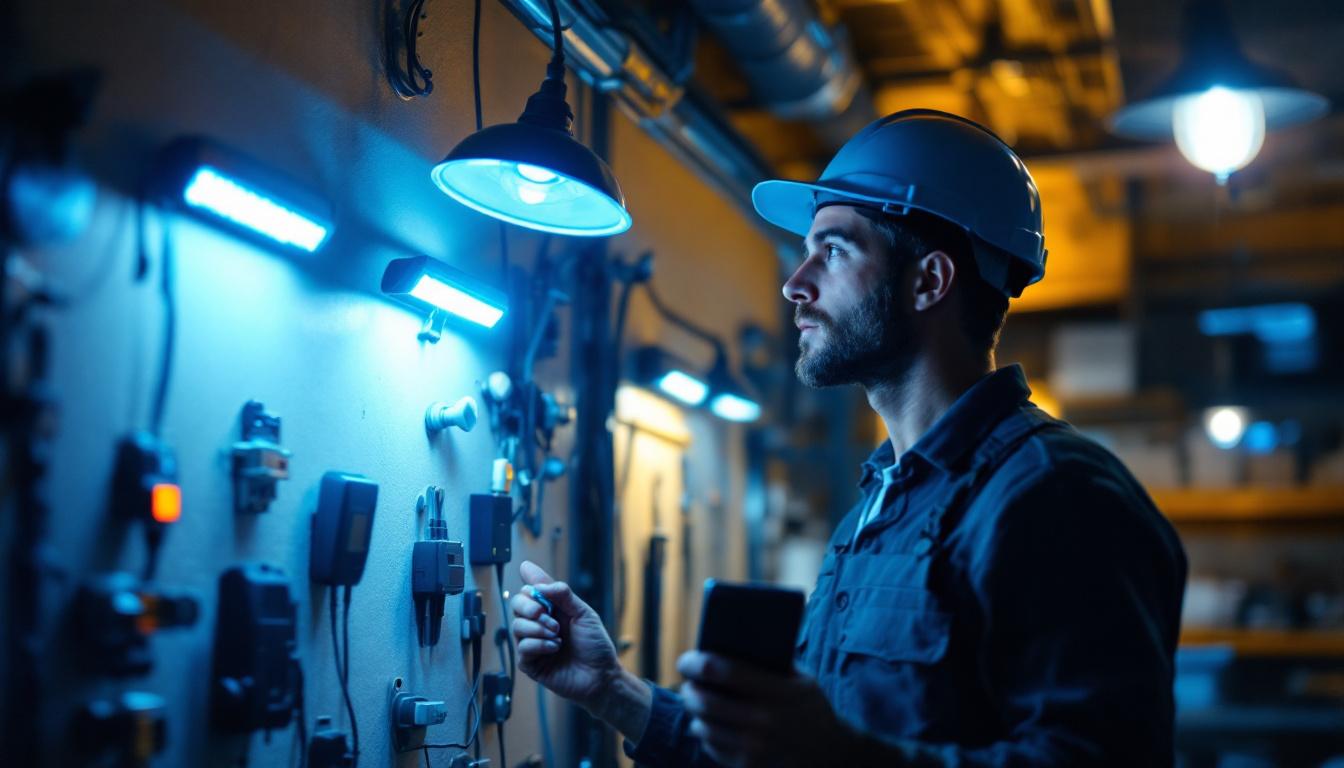
Lighting a horse barn is not just about illuminating a space; it’s about creating a safe, comfortable, and efficient environment for both horses and humans. Unlike typical commercial or residential lighting projects, horse barns present unique challenges that require specialized knowledge and attention to detail. Horses are sensitive animals, and their behavior and health can be influenced by lighting conditions. For lighting contractors, this means balancing functionality with animal welfare, all while ensuring durability and energy efficiency.
One of the first considerations is the barn’s layout and usage patterns. Stalls, aisles, tack rooms, wash racks, and feed areas all have different lighting requirements. Horses need enough light to move safely and calmly, but overly bright or flickering lights can cause stress or agitation. Lighting should also support the barn’s operational needs, such as early morning feedings or late-night checkups, without excessive energy consumption or maintenance demands.
In addition to layout, the type of lighting fixtures used in horse barns can significantly impact both the environment and the horses’ well-being. LED lights are increasingly favored for their energy efficiency and long lifespan, reducing the need for frequent replacements. Moreover, the color temperature of the lights plays a crucial role; warmer tones tend to create a more inviting atmosphere, which can help to keep horses relaxed and comfortable. It’s also important to consider the placement of lights to minimize shadows and dark spots, which can be disorienting for both horses and handlers. Properly designed lighting can enhance visibility during grooming, tacking, and veterinary care, ensuring that both horse and human can perform tasks safely and effectively.
Another critical aspect is the integration of natural light into the barn’s design. Skylights and large windows not only provide a source of daylight but also contribute to the horses’ natural circadian rhythms, promoting healthier behaviors and reducing stress. Studies have shown that horses exposed to natural light exhibit fewer signs of anxiety and are more likely to engage in normal behaviors, such as grazing and resting. Therefore, a thoughtful combination of artificial and natural lighting can create a harmonious environment that supports the well-being of the horses while also enhancing the working conditions for barn staff.
Light quality is paramount in horse barns. Horses perceive light differently than humans; they are more sensitive to flicker and glare, which can cause discomfort or nervousness. Using LED fixtures with high-quality drivers that minimize flicker is essential. Flicker not only disturbs horses but can also cause headaches and fatigue for barn workers.
Color temperature plays a critical role as well. Warmer light (around 2700K to 3000K) tends to be more calming and natural for horses, mimicking early morning or late afternoon sunlight. Cooler temperatures (4000K to 5000K) may be useful in work areas where clarity and alertness are priorities, such as feed or tack rooms. Avoid harsh, bluish light that can create a sterile or unsettling environment. Additionally, incorporating natural light sources, such as windows or skylights, can enhance the overall ambiance and well-being of both horses and humans, allowing for a more holistic approach to barn lighting.
Even light distribution is crucial to avoid shadows that can spook horses or create unsafe conditions. Fixtures should be positioned to illuminate aisles thoroughly without casting deep shadows inside stalls. Indirect lighting or diffusers can help soften the light and reduce glare. High-mounted fixtures with wide beam angles often work best for aisles, while adjustable or wall-mounted lights can provide focused illumination where needed.
Consider the height of the barn ceilings and the materials used in construction. Reflective surfaces can amplify light, while dark wood or metal may absorb it. A well-planned layout anticipates these factors to achieve consistent brightness throughout the barn. Additionally, strategically placing lights near grooming areas or wash racks can enhance visibility during essential care routines, ensuring that both horse and handler can work safely and effectively. Utilizing motion sensors in less-frequented areas can also conserve energy while providing light only when necessary.
Horse barns are harsh environments for lighting equipment. Dust, moisture, ammonia from waste, and physical impact risks are common. Lighting fixtures must be rated for damp or wet locations and constructed with durable materials resistant to corrosion and damage. IP65 or higher-rated fixtures are often recommended for areas prone to moisture or dust.
Safety is non-negotiable. Electrical installations must comply with local codes and standards, including proper grounding and protection against accidental contact. Using shatterproof bulbs or protective covers prevents broken glass hazards if a fixture is damaged. Additionally, wiring should be secured and routed to avoid interference with animals or equipment. Implementing emergency lighting systems can also be a wise investment, ensuring that the barn remains illuminated during power outages or emergencies, thereby enhancing safety for both horses and personnel. Regular maintenance checks on lighting systems can further prevent malfunctions and prolong the life of the fixtures, ensuring a consistently safe and well-lit environment.
LED technology has revolutionized barn lighting. Compared to traditional incandescent or fluorescent bulbs, LEDs offer significant energy savings, longer lifespan, and lower maintenance. These benefits translate to reduced operational costs and less frequent disruptions for repairs or replacements.
For lighting contractors, specifying LED fixtures designed for agricultural or equestrian use ensures optimal performance. Look for products with high lumen output per watt, good color rendering index (CRI), and robust construction. Integrating LEDs with dimmable drivers allows for flexible lighting levels tailored to different times of day or activities.
Additionally, the use of LED lights can enhance the overall safety of the barn environment. Their bright, clear illumination helps prevent accidents during nighttime hours, ensuring that both horses and handlers can navigate the space with confidence. Moreover, many LED fixtures come with weatherproof ratings, making them suitable for outdoor areas such as riding arenas or wash racks, where exposure to the elements is a concern. The ability to choose from a variety of color temperatures also allows barn owners to create a welcoming atmosphere, which can be particularly beneficial during events or open houses.
Modern horse barns increasingly incorporate smart lighting controls to enhance convenience and efficiency. Motion sensors can activate lights only when needed, reducing unnecessary energy use. Timers and programmable controls allow lighting schedules that mimic natural daylight cycles, supporting horses’ circadian rhythms.
Advanced systems can integrate with barn management software or mobile apps, enabling remote monitoring and adjustments. For contractors, understanding these technologies and their installation requirements is essential to meet client expectations and future-proof the barn’s lighting infrastructure.
Furthermore, the integration of smart controls can extend beyond just lighting. Many systems now offer the capability to control heating, ventilation, and even security features from a single interface. This holistic approach not only streamlines operations but also enhances the overall welfare of the horses. For instance, maintaining optimal temperature and humidity levels in the barn can significantly impact the health and comfort of the animals, while also reducing energy consumption. As technology continues to evolve, the potential for automation in horse barns will only grow, paving the way for more sustainable and efficient management practices in the equestrian industry.
Horses rely on natural light cues to regulate sleep, feeding, and hormonal cycles. Artificial lighting that disrupts these rhythms can lead to stress, behavioral issues, or health problems. Lighting contractors should design systems that provide gradual transitions between light and dark phases, avoiding abrupt changes or constant illumination.
Using dimmable fixtures and programmable timers helps simulate dawn and dusk conditions. This approach not only benefits the horses but also creates a more pleasant working environment for barn staff.
Sudden bright lights or flickering can startle horses, increasing the risk of injury to animals and handlers. Lighting should be installed and maintained to minimize these occurrences. For example, avoid placing bright lights directly in horses’ line of sight or near reflective surfaces that cause glare.
In areas where horses are frequently handled or moved, such as wash racks or grooming stations, softer, evenly distributed lighting reduces anxiety. Contractors can also recommend fixtures with adjustable brightness to accommodate individual barn routines.
Horse barns often evolve over time, with additions or changes in layout. Lighting contractors should design systems with flexibility in mind. Using modular fixtures and accessible wiring pathways simplifies future upgrades or repairs.
Documenting the lighting layout and control settings is valuable for barn owners and maintenance teams. Clear labeling and organized wiring reduce downtime and confusion during troubleshooting.
Dust and dirt accumulation can degrade lighting performance. Regular cleaning of fixtures and lenses maintains brightness and extends lifespan. Contractors can educate barn staff on safe cleaning practices and recommend maintenance schedules.
Periodic inspections should check for signs of wear, corrosion, or electrical issues. Early detection prevents costly failures and ensures continuous safe operation.
Several barns have demonstrated the benefits of well-designed lighting systems. One large equestrian facility replaced outdated fluorescent fixtures with LED lighting and integrated motion sensors. The result was a 60% reduction in energy costs and improved safety during nighttime operations.
Another barn implemented a lighting control system that mimicked natural daylight cycles, leading to noticeable improvements in horse behavior and health. Staff reported fewer incidents of startle responses and a calmer overall environment.
These examples highlight how thoughtful lighting design enhances both operational efficiency and animal welfare, reinforcing the critical role of lighting contractors in equine facility projects.
Lighting a horse barn demands more than technical skill; it requires understanding the unique needs of horses and the operational realities of barn management. Contractors who master these nuances deliver solutions that improve safety, comfort, and efficiency.
From selecting the right fixtures and color temperatures to integrating smart controls and planning for maintenance, every decision impacts the barn’s environment. By prioritizing quality, durability, and animal welfare, lighting contractors become trusted partners in creating optimal spaces for horses and their caretakers.
Ready to elevate your horse barn lighting projects to new heights? Choose LumenWholesale for an exceptional selection of spec-grade lighting products that promise quality, durability, and the welfare of animals. Our commitment to providing contractors with the best value is unmatched, offering high-performance lighting solutions at wholesale prices with the convenience of free shipping. Don’t let inflated markups dim your project’s potential. Visit Wholesale Lighting at the Best Value and discover how we can brighten your equine facilities with superior lighting that meets your needs and exceeds expectations.

Discover how integrating Flat Panel 2X4 LED lighting can revolutionize your contracting business.

Discover why LED lighting is revolutionizing garage spaces and why every lighting contractor should prioritize it.

Discover how the best garage LED lights can revolutionize efficiency for lighting contractors.

Discover essential strategies for future-proofing your construction lighting projects with durable and adaptable string lights.